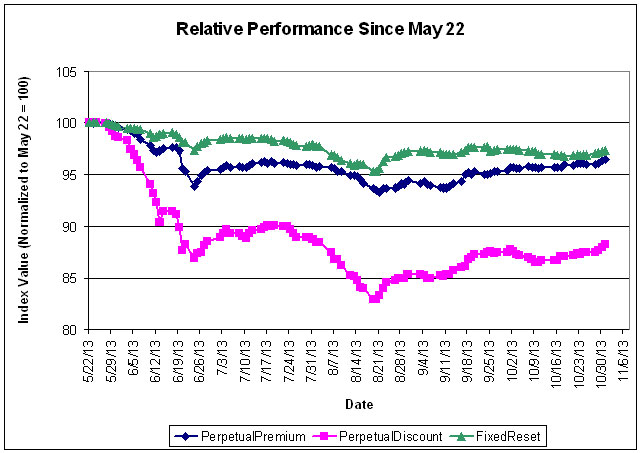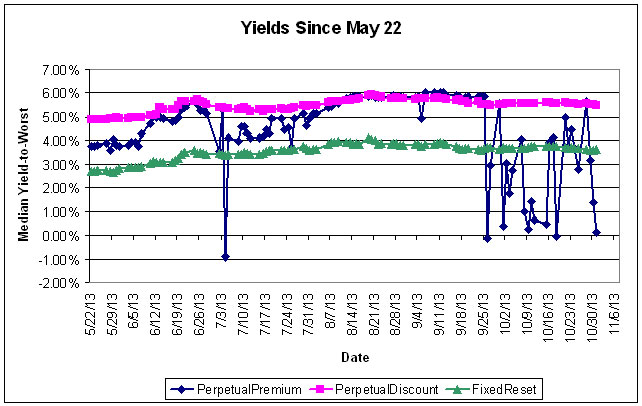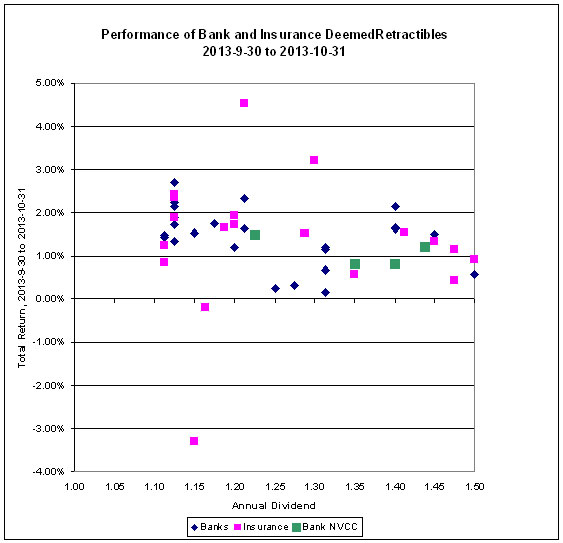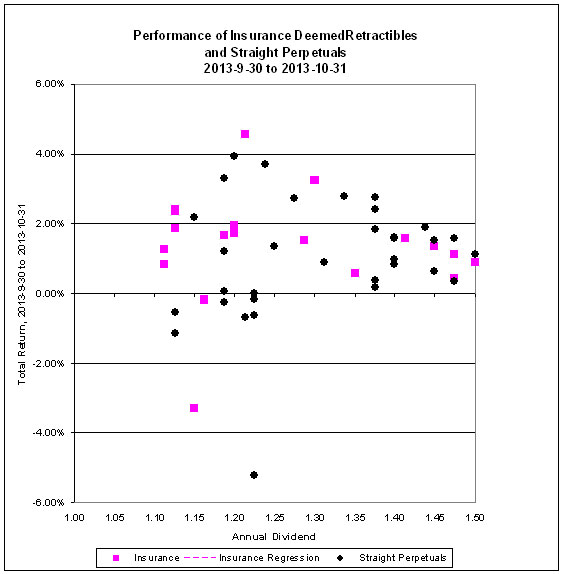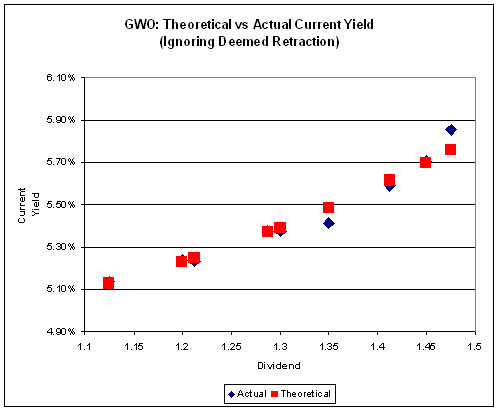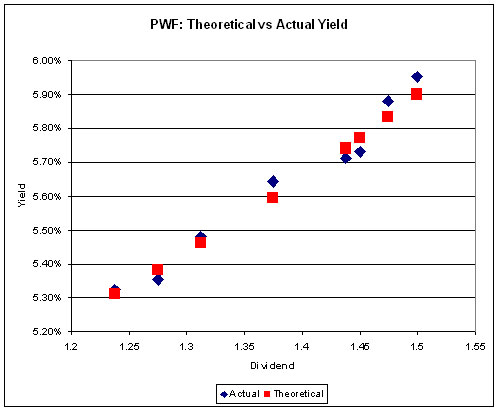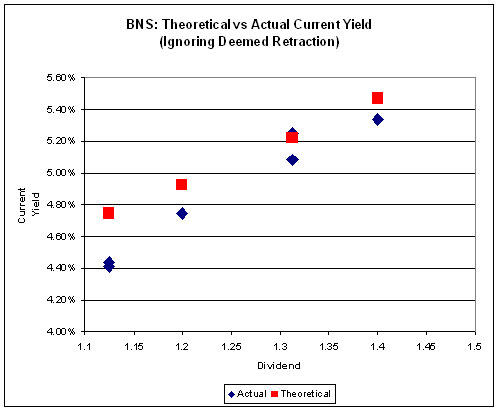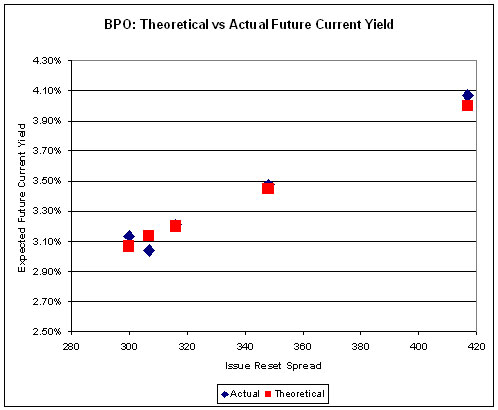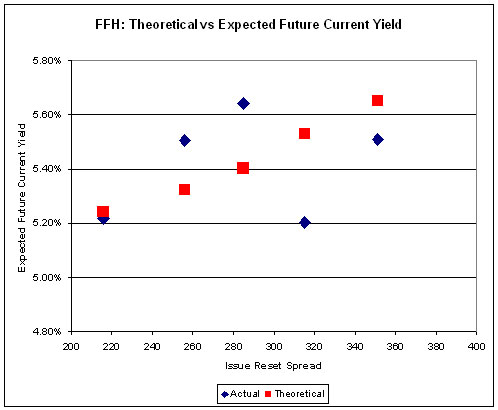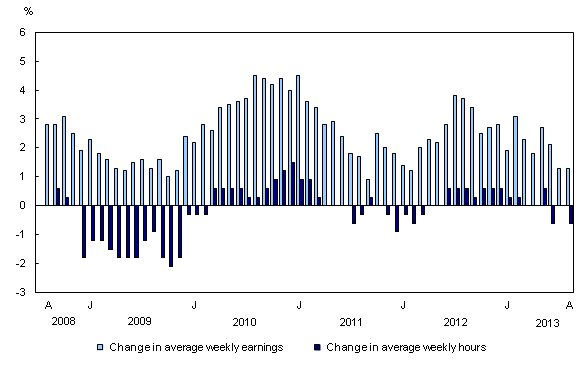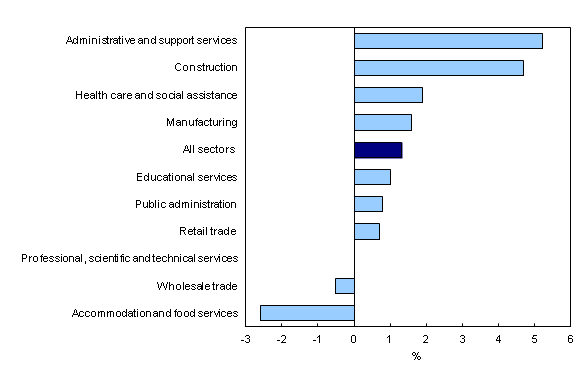OSFI has released a letter to IASB about Insurance Contracts. Their first objection is serious – very serious indeed:
We are concerned that, if the ED is finalized as proposed, OSFI would likely need to make significant adjustments to the financial statements for regulatory capital purposes.
Oh golly! They might have to change their regulatory capital calculations!
Funny, I would have thought that the sole legitimate consideration was: do the proposed changes provide a materially better reflection of reality than the prior accounting paradigm? But I suppose I am only parading my naivety.
Their second objection is equally oblivious to the issues:
Moreover, the adjustments in question may have the effect of relaxing rather than constraining the assumptions that lie behind the requirements of the standard.
Well, that’s fine – as long as the new standards reflect reality better than the old ones, who cares whether they’re relaxing or constraining?
The meat of their letter highlights some motherhood issues, but doesn’t provide any suggestions:
In our 2010 comment letter, OSFI noted the potential for significant, inappropriate volatility if short term fluctuating market rates were used to discount very long-duration liabilities. The IASB has confirmed that either a bottom-up or top-down approach could be used to determine the discount rate. However, due to the high-level nature of a principles based standard, we understand there are a wide range of views of how the top-down approach could be interpreted for the long duration discount rates as currently drafted in the ED. We are pleased that the exposure draft allows more weight to be put on long term estimates than on short-term fluctuations when forecasting unobservable discount rates for long-duration liabilities. We believe current period fluctuations should not exaggerate the volatility of very long-dated liabilities. As such, long-duration liabilities beyond the observable period where deep and liquid markets exist should grade to a slow-moving long-term rate.
When discussing Asset Liability Management, they’re a little shy about stating their concern directly:
We believe the use of OCI for insurance contract liability measurement should be optional, rather than mandatory as currently proposed in the ED.
Asset Liability Management (ALM) practices are designed to ensure that there are sufficient assets to support insurance liabilities. This is achieved by investing in various types of assets with different attributes (e.g. yield, cash flow, risk and duration) that best fulfill various insurance liabilities obligations. Accounting standards should capture economic mismatches between assets and the insurance contract liabilities they support, but standards should not create accounting mismatches on their own. We believe the mandatory use of OCI may have an unintended consequence by reflecting both economic and accounting mismatches in the financial statements, making it difficult for users to distinguish between true economic mismatches and those created by accounting standards.
In order to fulfill various types of insurance liabilities obligations, investing in assets like mortgages, equities and derivatives instead of plain vanilla bonds could be appropriate for a portfolio that is well managed and diversified. We believe the interaction between IFRS 4 and IFRS 9 needs further consideration to take into account ALM practices of life insurers and to reduce accounting mismatches.
A very bureaucratic letter! All the substance will take place behind closed doors, to ensure opacity and non-accountability.
The latest housing bubble worry emanates from Australia:
Australia, where housing accounts for about 60 percent of average household wealth compared with a global average of 45 percent, joins countries from Canada to Sweden to China seeing rapid price gains amid low borrowing costs that are sparking fears of a housing bubble. For now, constrained housing supply and demand from investors are driving prices higher, overpowering the downdraft from slower economic growth and a rising jobless rate.
…
In Sydney, the nation’s most populous city, the average home price surged 13 percent in the 10 months to Oct. 31 to a record A$718,122 according to the RP Data-Rismark home value index. That compares with $806,000 in New York as of Sept. 30, according to the Real Estate Board of New York, and 331,338 pounds ($536,237) in London, according to the Nationwide Building Society.
A report to the U.S. Treasury’s Borrowing Advisory committee titled Assessing fixed income market liquidity makes some cogent points:
- ● Market turnover has if anything increased since the financial crisis
- ● But liquidity is about much more than turnover
- – Tendency to disappear abruptly when really needed
- ● Primary liquidity not really a problem; major issues all in secondary
- ● Neither turnover nor the street have been able to keep pace with the massive expansion in markets
- ● Regulations have created multiple constraints likely to curtail liquidity when it is really needed:
- – Most have pushed liquidity towards Treasuries, reducing it in risky assets:
- • Basel risk-weightings, swaps clearing, LCR requirements
- – Now, supplementary leverage ratios risk curtailing it even in Treasuries: dealers likely to meet requirements by reducing assets rather than raising capital
- ● Effects of regulations to date have been offset by Fed policy pushing investors in the opposite direction:
- – Significant demand for fixed income assets in general, and risky assets in particular
- ● Technology and shifts in market structure have added to the appearance of liquidity, but done little to add depth
- ● Potential for significant dislocation when investor flows reverse
…
Secondary trading requires risk warehouses
…
Capital cost under Basel 3 … 3-5x increase in charges for corporate bonds
…
Dealers can no longer afford to act as credit warehouses
There are a lot of great charts in those slides and I thoroughly recommend a full reading of the presentation. It strikes me that at some point, some large hedge fund – perhaps one that already acts as an intermediary for retail equity trades, standing between the brokerage house and the exchanges – will find it worth their while to make markets from their long positions. I think that – subject to regulatory bullshit, which is probably extremely bullshitty – the big Canadian funds should be doing that now. Why not?
It was a mixed day for the Canadian preferred share market, with PerpetualDiscounts up 5bp, FixedResets gaining 2bp and DeemedRetractibles off 8bp. Volatility was dominated by FixedResets. Volume was well above average.
| HIMIPref™ Preferred Indices These values reflect the December 2008 revision of the HIMIPref™ Indices Values are provisional and are finalized monthly |
|||||||
| Index | Mean Current Yield (at bid) |
Median YTW |
Median Average Trading Value |
Median Mod Dur (YTW) |
Issues | Day’s Perf. | Index Value |
| Ratchet | 0.00 % | 0.00 % | 0 | 0.00 | 0 | 0.4919 % | 2,502.7 |
| FixedFloater | 4.21 % | 3.49 % | 27,719 | 18.40 | 1 | 1.0753 % | 3,986.0 |
| Floater | 2.96 % | 2.99 % | 64,160 | 19.72 | 3 | 0.4919 % | 2,702.2 |
| OpRet | 4.63 % | 3.16 % | 67,451 | 0.56 | 3 | 0.1030 % | 2,636.4 |
| SplitShare | 4.74 % | 5.08 % | 68,605 | 3.66 | 6 | 0.2154 % | 2,962.9 |
| Interest-Bearing | 0.00 % | 0.00 % | 0 | 0.00 | 0 | 0.1030 % | 2,410.8 |
| Perpetual-Premium | 5.58 % | 4.35 % | 126,215 | 0.30 | 11 | -0.0611 % | 2,304.4 |
| Perpetual-Discount | 5.51 % | 5.53 % | 181,283 | 14.56 | 27 | 0.0481 % | 2,380.2 |
| FixedReset | 5.00 % | 3.61 % | 227,137 | 3.35 | 82 | 0.0158 % | 2,460.8 |
| Deemed-Retractible | 5.08 % | 4.08 % | 193,768 | 1.65 | 42 | -0.0822 % | 2,409.8 |
| FloatingReset | 2.62 % | 2.38 % | 297,228 | 4.51 | 5 | -0.0793 % | 2,456.0 |
| Performance Highlights | |||
| Issue | Index | Change | Notes |
| TRP.PR.A | FixedReset | -1.83 % | YTW SCENARIO Maturity Type : Limit Maturity Maturity Date : 2043-11-05 Maturity Price : 23.05 Evaluated at bid price : 23.56 Bid-YTW : 3.98 % |
| FTS.PR.H | FixedReset | -1.55 % | YTW SCENARIO Maturity Type : Limit Maturity Maturity Date : 2043-11-05 Maturity Price : 21.36 Evaluated at bid price : 21.66 Bid-YTW : 3.84 % |
| ELF.PR.G | Perpetual-Discount | -1.49 % | YTW SCENARIO Maturity Type : Limit Maturity Maturity Date : 2043-11-05 Maturity Price : 21.77 Evaluated at bid price : 21.77 Bid-YTW : 5.51 % |
| BAM.PR.X | FixedReset | -1.42 % | YTW SCENARIO Maturity Type : Limit Maturity Maturity Date : 2043-11-05 Maturity Price : 21.82 Evaluated at bid price : 22.16 Bid-YTW : 4.26 % |
| BAM.PR.G | FixedFloater | 1.08 % | YTW SCENARIO Maturity Type : Limit Maturity Maturity Date : 2043-11-05 Maturity Price : 22.80 Evaluated at bid price : 22.56 Bid-YTW : 3.49 % |
| SLF.PR.G | FixedReset | 1.09 % | YTW SCENARIO Maturity Type : Hard Maturity Maturity Date : 2025-01-31 Maturity Price : 25.00 Evaluated at bid price : 23.13 Bid-YTW : 4.27 % |
| BAM.PR.T | FixedReset | 1.15 % | YTW SCENARIO Maturity Type : Limit Maturity Maturity Date : 2043-11-05 Maturity Price : 22.83 Evaluated at bid price : 23.81 Bid-YTW : 4.34 % |
| Volume Highlights | |||
| Issue | Index | Shares Traded |
Notes |
| W.PR.H | Perpetual-Discount | 61,700 | TD crossed blocks of 30,000 and 25,000, both at 24.45. YTW SCENARIO Maturity Type : Limit Maturity Maturity Date : 2043-11-05 Maturity Price : 24.20 Evaluated at bid price : 24.46 Bid-YTW : 5.67 % |
| TRP.PR.C | FixedReset | 57,295 | Nesbitt crossed 17,700 at 22.75. YTW SCENARIO Maturity Type : Limit Maturity Maturity Date : 2043-11-05 Maturity Price : 22.20 Evaluated at bid price : 22.50 Bid-YTW : 3.79 % |
| NA.PR.L | Deemed-Retractible | 57,133 | TD crossed blocks of 12,000 and 40,000 at 25.38. YTW SCENARIO Maturity Type : Call Maturity Date : 2013-12-05 Maturity Price : 25.25 Evaluated at bid price : 25.27 Bid-YTW : 2.24 % |
| CM.PR.M | FixedReset | 56,870 | RBC crossed 50,000 at 25.75. YTW SCENARIO Maturity Type : Call Maturity Date : 2014-07-31 Maturity Price : 25.00 Evaluated at bid price : 25.71 Bid-YTW : 2.76 % |
| FTS.PR.E | OpRet | 53,600 | RBC crossed 48,100 at 26.00. YTW SCENARIO Maturity Type : Call Maturity Date : 2014-06-01 Maturity Price : 25.50 Evaluated at bid price : 25.96 Bid-YTW : 3.16 % |
| IFC.PR.C | FixedReset | 45,022 | YTW SCENARIO Maturity Type : Call Maturity Date : 2016-09-30 Maturity Price : 25.00 Evaluated at bid price : 25.26 Bid-YTW : 3.99 % |
| There were 45 other index-included issues trading in excess of 10,000 shares. | |||
| Wide Spread Highlights | ||
| Issue | Index | Quote Data and Yield Notes |
| GWO.PR.J | FixedReset | Quote: 25.34 – 25.97 Spot Rate : 0.6300 Average : 0.4338 YTW SCENARIO |
| BAM.PR.C | Floater | Quote: 17.65 – 18.14 Spot Rate : 0.4900 Average : 0.3065 YTW SCENARIO |
| RY.PR.X | FixedReset | Quote: 25.65 – 26.08 Spot Rate : 0.4300 Average : 0.2558 YTW SCENARIO |
| CIU.PR.C | FixedReset | Quote: 21.16 – 21.93 Spot Rate : 0.7700 Average : 0.6169 YTW SCENARIO |
| TRP.PR.A | FixedReset | Quote: 23.56 – 23.99 Spot Rate : 0.4300 Average : 0.3065 YTW SCENARIO |
| RY.PR.C | Deemed-Retractible | Quote: 25.40 – 25.70 Spot Rate : 0.3000 Average : 0.1898 YTW SCENARIO |
